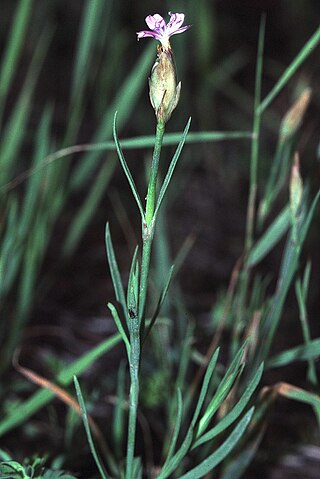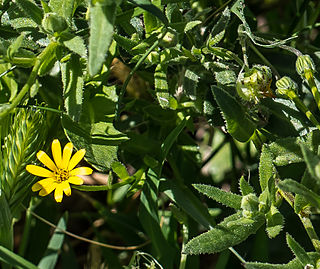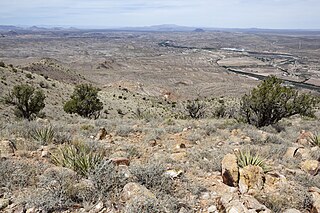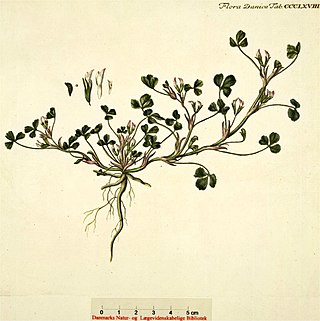
In geography, the temperate climates of Earth occur in the middle latitudes, which span between the tropics and the polar regions of Earth. These zones generally have wider temperature ranges throughout the year and more distinct seasonal changes compared to tropical climates, where such variations are often small and usually only have precipitation changes.

Macaronesia is a collection of four volcanic archipelagos in the North Atlantic, off the coasts of Africa and Europe. Each archipelago is made up of a number of Atlantic oceanic islands, which are formed by seamounts on the ocean floor whose peaks have risen above the ocean's surface. Some of the Macaronesian islands belong to Portugal, some belong to Spain, and the rest belong to Cape Verde. Politically, the islands belonging to Portugal and Spain are part of the European Union. Geologically, Macaronesia is part of the African tectonic plate. Some of its islands – the Azores – are situated along the edge of that plate at the point where it abuts the Eurasian and North American plates.

Friedrich Richard Rudolf Schlechter was a German taxonomist, botanist, and author of several works on orchids.

Gnetum is a genus of gymnosperms, the sole genus in the family Gnetaceae within the Gnetophyta. They are tropical evergreen trees, shrubs and lianas. Unlike other gymnosperms, they possess vessel elements in the xylem. Some species have been proposed to have been the first plants to be insect-pollinated as their fossils occur in association with extinct pollinating scorpionflies. Molecular phylogenies based on nuclear and plastid sequences from most of the species indicate hybridization among some of the Southeast Asian species. Fossil-calibrated molecular-clocks suggest that the Gnetum lineages now found in Africa, South America and Southeast Asia are the result of ancient long-distance dispersal across seawater.

The Congolian rainforests are a broad belt of lowland tropical moist broadleaf forests which extend across the basin of the Congo River and its tributaries in Central Africa. They are the only major rainforests which absorb more carbon than they emit.

Linnaea is a plant genus in the honeysuckle family Caprifoliaceae. Until 2013, the genus included a single species, Linnaea borealis. In 2013, on the basis of molecular phylogenetic evidence, the genus was expanded to include species formerly placed in Abelia, Diabelia, Dipelta, Kolkwitzia and Vesalea. However, this is rejected by the majority of subsequent scientific literature and flora.

Hans Schinz was a Swiss explorer and botanist who was a native of Zürich.

Searsia pentaphylla, the tizra tree, is a sumac shrub or small tree species in the genus Searsia found in North Africa, especially in Morocco and Algeria, the Levant, and Sicily.
Plants of the World Online (POWO) is an online database published by the Royal Botanic Gardens, Kew. It was launched in March 2017 with the ultimate aim being "to enable users to access information on all the world's known seed-bearing plants by 2020". The initial focus was on tropical African Floras, particularly Flora Zambesiaca, Flora of West Tropical Africa and Flora of Tropical East Africa.

Bromus benekenii is a species of grass in the family Poaceae.

Veronica montana or wood speedwell is a perennial species of flowering plant from the genus Veronica. It also belongs to the family Plantaginaceae.

Petrorhagia prolifera is a species of flowering plant belonging to the family Caryophyllaceae.

Epilobium obscurum is a species of flowering plant belonging to the family Onagraceae.
William John Bulsiewicz is an American board-certified gastroenterologist and author known for his exploration of the relationship between the gut microbiome and plant-based nutrition.

Calendula stellata is a species of flowering plant in the marigold genus Calendula, family Asteraceae. It is native to northwestern Africa, Malta, and Sicily. The Royal Horticultural Society considers it to be "highly attractive" and suitable for gardens in a Mediterranean climate.

Juniperus arizonica, the Arizona juniper, is a species of conifer in the family Cupressaceae, native to the Sonoran Desert of the southwestern United States and northwestern Mexico. It is a shrub or small tree, reaching 8 m (26 ft).

Trifolium ornithopodioides, the bird's foot clover, is a species of flowering plant in the family Fabaceae. It is native to Europe, Madeira, and northwestern Africa, and has been introduced to Australia and New Zealand. It is a halophyte.















